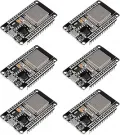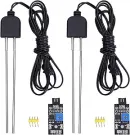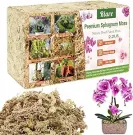In order to build this system, it was necessary to understand the necessary components. I wanted more than just a DIY project where you had one controller per plant. Additionally, I wanted it to be able to work in areas where people put plants.
While plants can be virtually anywhere, they are generally in places like shelves that are out-of-the-way. Many times they’re used interchangeably with non-living decor.
So in order to make this work well, it would need to solve problems like these. AND be easy to use by offering a way to check on the health of every plant.
Defining the Requirements
After thinking through the many possible applications and variations I could make, I decided upon keeping with the system that would help make my own life easier. This would be purely indoor application that would:
- Use a single station that would serve up to six plants. Why six? It seemed like a good number to me. 🙂
- The station would have a pump that would pull water from a container (a vase, bucket, etc) and distribute it. Because it’s not a great idea to have the possibility of an infinite water source running unchecked inside the house.
- The station would have valves that would be closed when not under power. Again, I’d need to ensure the water is always under control in case of loss of power.
- Each valve would be paired with a sensor so when the station receives a dry reading from a sensor, it understands which valve to open to water the correct plant.
- The sensors would be completely wireless. Powered by battery or solar and transmitting their reading to their station. Tubing is cheap. Wiring is not. So the station can be placed in a central location and the plants can be placed wherever they need to be. Additionally, tubing is usually clear, so it wouldn’t draw attention like wiring would.
Designing the Build
Since this would be an IoT project, it’s likely it would involve Arduino. That would mean I’d need to use Arduino IDE (or something like it) and…learn how to code in C++ (or at least the basics) since that isn’t a language I’ve had the opportunity to use.
I’d also have to dust off my circuit knowledge, which I was first introduced to waaaay back in elementary school or secondary school. Then I gained a deeper understanding of components during my college courses for my computer repair degree. And that was 20 years ago. You might say I’m a little rusty.
So this would be a great opportunity to brush up. And now, as opposed to 20 years ago, I have access to all the wonderful content creators on YouTube and all of the blogs I could ever want.


